

Shalom Aleichem "peace be upon you"
Shalom Aleichem "peace be upon you"
Commandment Keepers Ethiopian Hebrew Congregation
Beth Ha-Tefilah Headquarters Synagogue

Commandment Keeper's History
Commandment Keeper's History
"And He will set up an ensign for the nations, and will assemble the dispersed of Israel, and gather together the scattered of Judah from the four corners of the earth." Isaiah 11:12
"We believe the people Moses led out of Egypt were black"
"We believe the people Moses led out of Egypt were black"
George Simor, Black Jews of Harlem, Sepia, April 1968, at 30
(quoting Chief Rabbi Wentworth Arthur Matthew, founder of Commandment Keepers Ethiopian Hebrew Congregation - Beth Ha-Tefilah Headquarters)
On July 13, 1921, Chief Rabbi Matthew zt"l filed Commandment Keepers' Certificate of Incorporation in the Office of the County Clerk, New York County. This was the first step in his mission to conduct a synagogue in accordance with the strict Orthodox Hebrew teaching and keeping with the laws of Torah. Chief Rabbi Matthews’ mission was to return every man, woman and child of the Children of Israel to Mount Sinai to establish a relationship with YHWH. He established the synagogue known as Commandment Keepers in order to instill a true and devoted reverence for the Orthodox Hebraic Culture in the hearts of the people of the Hebrew faith and to inspire in them a desire for the knowledge, learning, love and respect for the Hebrew tradition. The establishment of the synagogue provided a place where every man, woman, and child could learn to live a wholesome Hebrew life in the spirit of the Torah and its teachings. Through the founding of Commandment Keepers, the synagogue established a unified community, placing its congregation on the road to self-reliance with a superior culture and higher civilization than they had previously experienced outside of the synagogue.
In 1942 Chief Rabbi Matthew zt"l published his Minute Book; A Short History, with the Order of Service, Curriculum, Twelve Principles, Constitution, and By-Laws of Auxiliaries, Annual Address and Anthropology combined. Headquarters was located at 87 West 128th Street, New York City. Year Book page 2 in the Minute Book describes this evolution:
"From 1919 to 1930 the Commandment Keepers prospered, as we surged back and forth with the tides of life, doing all the good we could for all who came unto us seeking our spiritual and moral aid. Branches were set up in many eastern cities, also in the south, south-west, the West Indies. Then came the financial crash of 1929...in April 1932 the congregation wilted...But taking courage, a few gold members got together, made the supreme sacrifice and raised enough to rent at 30 West 129th Street...We carried on under these conditions for four years, from 1932 to 1936. Then by rapid strides and careful manipulation of what little finance we were able to accumulate, we obtained the property at 87 West 128th Street, N.Y.C., and again assembled the work and consolidated our efforts, bringing the congregation and the school and Royal Order of Ethiopian Hebrews under one roof." Minute Book, page 2
In 1962, Chief Rabbi Matthew zt"l and the congregation purchased a five-story brownstone mansion at 31 Mount Morris Park West also known as 1 West 123rd Street in Harlem, New York. The mansion was designed by Frank H. Smith in 1890 for the John Dwight family and featured the neo-Renaissance style of architecture that had been introduced to the neighborhood by the prominent firm of McKim, Mead & White, Smith. (See photos of synagogue building below.)

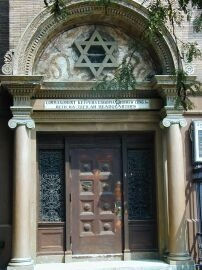
After the Dwight family left, the mansion functioned as a sanatorium for many years until it was bought and converted into a synagogue in 1962 by the Commandment Keepers congregation and became headquarters and home to one of the oldest Israelite congregations of the United States and the Caribbean. The congregation served Harlem, the boroughs of Brooklyn, Queens, Bronx and Staten Island, as well as the states of New Jersey and Pennsylvania.
Despite the adversity from 1919 to 1942, the congregation prevailed and the name of the congregation continued to evolve to reflect the delicate balance between the influence of the community in which the Israelite congregation lived, legal requirements, Orthodox Ethiopian Hebraic culture and Israelite fundamental beliefs illustrating "continuity and change" of the Israelite congregation as Chief Rabbi Matthew zt"l developed his congregation moving it closer to an Orthodox Ethiopian Hebraic tradition.
During his tenure as Chief Rabbi of Commandment Keepers, Chief Rabbi Matthew zt"l was assisted by Rabbi Darnley Smalls zt"l, Rabbi Matthew Stevens zt"l, and Rabbi McCullough Johan zt"l until his death in 1973.
With the passing of the late Chief Rabbi Matthew zt"l in 1973, the Commandment Keepers was assumed by many to be the most exemplar of his movement in Harlem. In 1975, Rabbi Chaim White zt"l succeeded Chief Rabbi Matthew zt"l as spiritual leader until his death in 1997. Rabbi Yhoshua Yohanatan zt"l succeeded Rabbi Chaim White zt"l until he retired in 2000.
Commandment Keepers survived World War I, the Depression, World War II, and the Civil Rights era and entered the new millennia under the spiritual leadership of Rabbi Zechariah HaLewi ibn Abraham zt"l "Rabbi Zechariah Lewi." Rabbi Zechariah Lewi zt"l became the spiritual leader of the congregation in 2000 and continued to maintain and conduct a house of worship in keeping with the dictates of the written and oral laws of Orthodox Ethiopian Hebraic culture and other traditionally authoritative codifications of Hebrew Law as set forth in the mission and legacy of the late Chief Rabbi Matthew zt"l.
The synagogue is currently in its greatest hour of test, and the few dedicated members remaining have been faced with the daunting task of finding a way to revitalize and continue Chief Rabbi Wentworth Arthur Matthew's zt"l legacy.
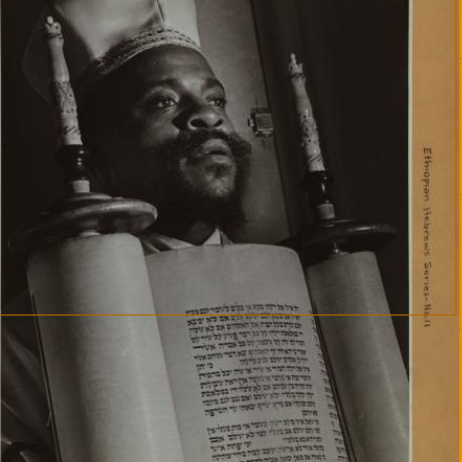
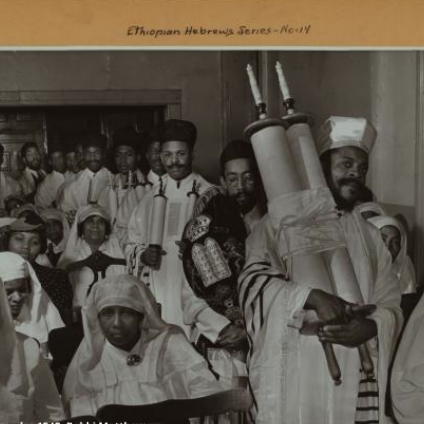





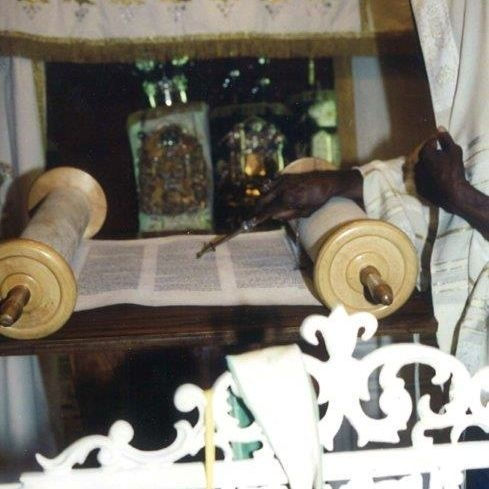
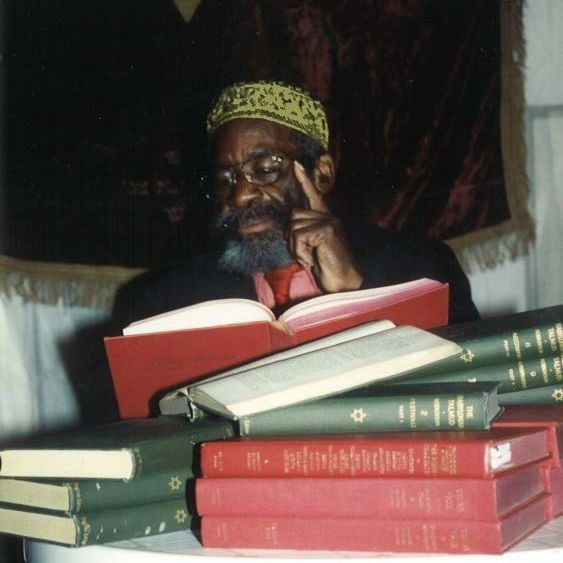


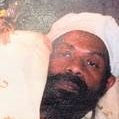

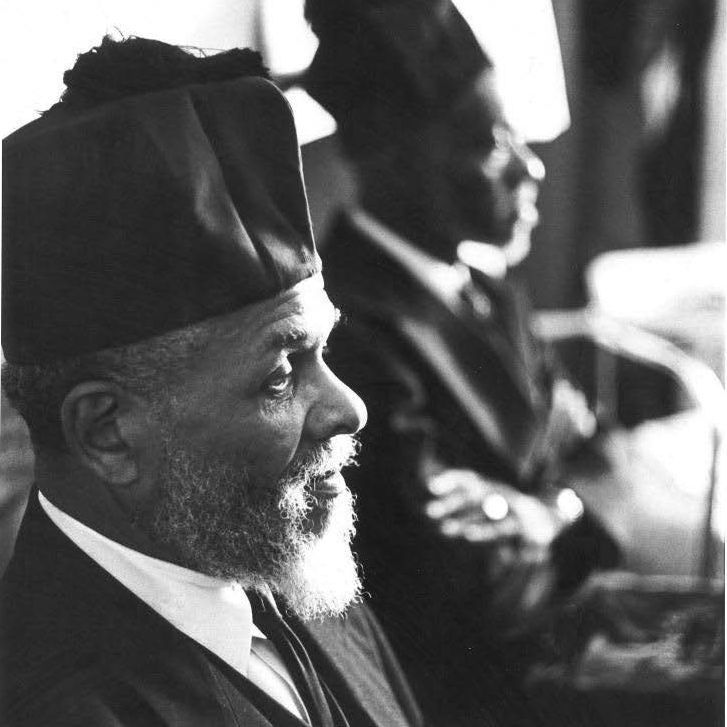
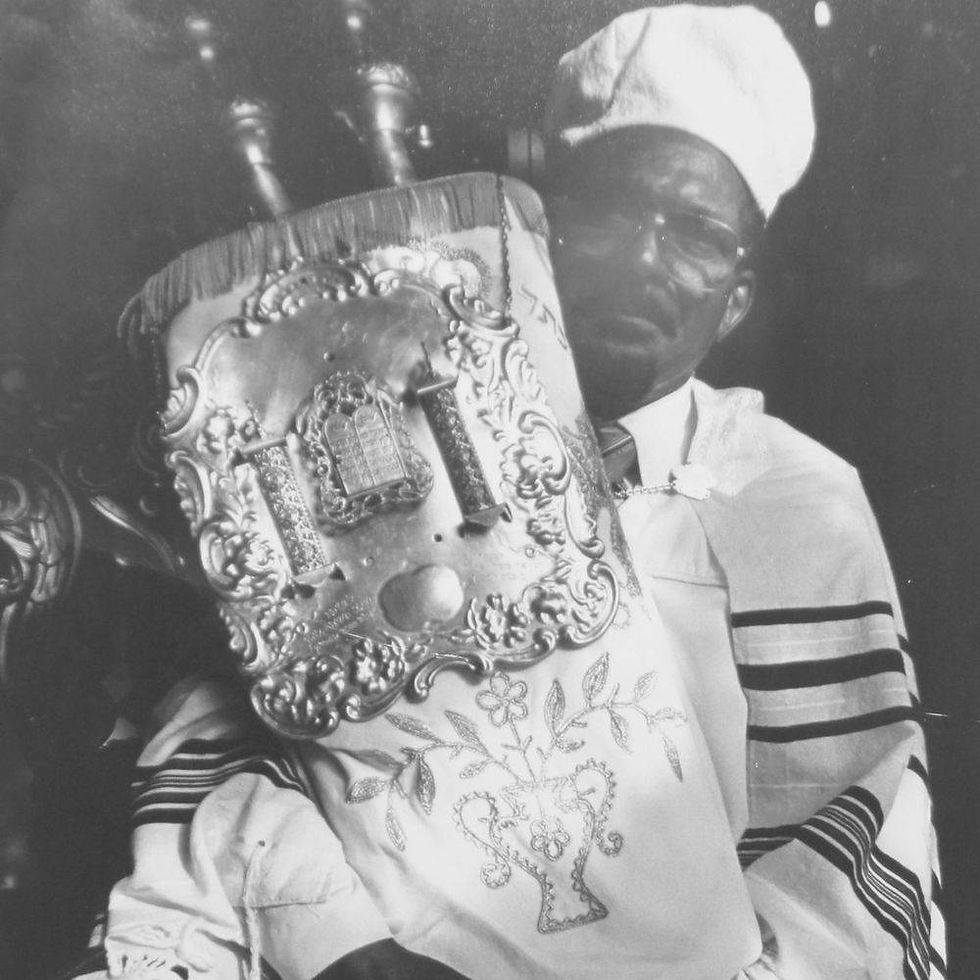
Our Synagogue: Customs and Etiquette
Beth Tefilah or beit tefilah is a house of prayer. We welcome you to come and worship with us on Shabbat mornings at 9:30 am. Come as you are to feel God's presence, worship and join our community in prayer. We have a few customs that are not obligatory on the visitor; however, as a house of prayer we would like to walk you through some of our customs that are deemed to be appropriate and respectful when entering the synagogue. Typically, Shabbat services will begin at 9:30 am.
What to Wear
Our customs and etiquette is not meant to be intimidating and/or not meant to discourage a visitor from attending. We welcome you to our synagogue which is considered a house of God, and a place of prayer, so it is usually appropriate to wear modest attire. We ask men, women and children to cover their heads out of respect for the Creator. Generally, men and boys will wear a kippah, skullcap, or yarmulke. Men don a tallit; which is not obligatory.
Shabbat Morning Service at a Glance “Shacharit Shabbat”
The regular Shabbat service uses two books, a siddur, which contains the prayers that are recited by the congregation, and a chumash, which contains the Hebrew and English text of the Five Books of Moses: Genesis, Exodus, Leviticus, Numbers, and Deuteronomy.
Shabbat morning service is called Shacharit Shabbat; it involves standing and sitting but don’t be intimidated, the person leading the service will typically give instructions on when to stand or sit. Shacharit Shabbat can be likened to a crescendo; a well-orchestrated symphony making use of the Psalms and various scriptures to Praise God in his sanctuary – we in essence, “Let everything that has breath praise the Lord in His sanctuary as we all declare: Hallelu Yah!
To assist you in feeling welcomed, and to freely navigate through out our service, we would like to give you the basic structure of our service below:
Birchot Hashachar and P’sukei D’Zimra
Shacharit Shabbat begins with the Birchot Hashachar (Morning Blessings) and P’sukei D’Zimra (Verses of Song). Both Birchot HaShachar and P’Sukei D’Zimra are structured to help the worshipper and/or visitor to enter into the proper reflective and contemplative state of mind before the main service begins; this is the warm-up to our Torah Service.
Historically, the morning blessings “Birchot HaShachar” originally began as the blessings people would recite each morning in their home as they awoke, got dressed, or washed. Throughout time Birchot HaShachar shifted from the home to the synagogue service. In a nutshell, Birchot HaShachar includes such items as praising God for allowing us for straightening the bent (getting out of bed) among other blessings. We also thank God for our body’s ability to function properly and for the creation of our souls.
On the other hand, the P’Sukei D’Zimra contains numerous readings, primarily from the book of Psalms and other sections of the TaNaCh (Hebrew bible). The core of P’Sukei D’Zimra is the Ashrei (Psalm 145) and Hallel (Psalms 146-150).
Shema and It’s Blessings
The Shema and its surrounding blessings are one of the two main sections of the Shacharit Shabbat Morning Prayer service. This section of the service begins with the call to worship (Barchu). The Shema is then preceded by two blessings, Yotzer Or which focuses on praising God for creation and Ahava Rabbah which focuses on praising God for revelation. The Shema itself consists of three biblical passages, Deuteronomy 6:4-9, Deuteronomy 11:13-21, and Numbers 15:37-41. After the recital of the Shema this section of the service concludes with a third blessing called Emet V’Yatziv which focuses on praising God for redemption.
Amidah/Shmoneh Esrei
The second main section of the Shacharit Shabbat Morning Prayer service is the Amidah or Shmoneh Esrei. The Shabbat Amidah consists of three different sections beginning with praise of God, leading into the middle section that celebrates the holiness and specialness of Shabbat, and concludes with prayers of thanksgiving and peace.
Torah Service
The Torah scroll is removed from the ark and the weekly Torah portion is read “parashat.” After the Torah reading comes the Haftarah reading associated with the weekly Torah parashat. Once all readings are completed the Torah scroll will be returned to the ark. Typically, a quorum of ten (10) men is needed to take out the Torah scroll: “The power of Torah:… Conventional wisdom contends that Halacha requires a quorum of 10 adult men to recite sanctification prayers…” The Jerusalem Post August 10, 2016; 6Av, 5776 by Shlomo Brody
Help us Make Minyan
We ask that men please volunteer and join us for our Torah Service. We really need your help to make minyan on the Shabbat. We need to have the minimum of ten (10) men. It is considered an honor to make minyan. So, please come out and help us to take out the Torah scrolls. For those who are at home on Shabbat, please consider picking at least one Saturday and join us!!!
Aleinu and Closing Prayer
The service concludes with the Aleinu prayer which focuses on our obligation to praise God and the hope that one day all of mankind will be united in service to God.
Dos and Don’ts
Please turn off cell phones before entering the sanctuary.
No smoking is allowed.
Applause is not appropriate.
Photography or videotaping is not permitted on the Shabbat.
When the Ark is open, we ask that you use discretion in entering and leaving the sanctuary.
Shalom Aleikhem שָׁלוֹם עֲלֵיכֶם "Peace Be Upon You"
We look forward to seeing you soon!
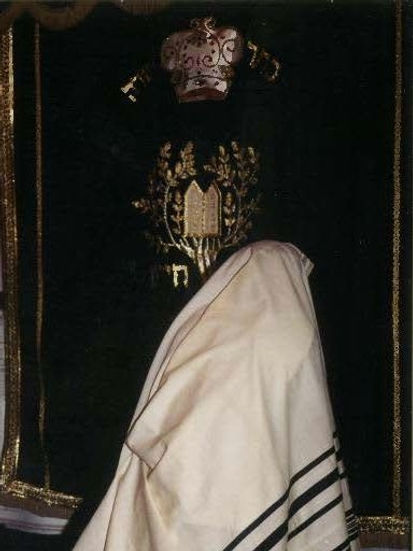
Psalms Chapter 150 תְּהִלִּים
א הַלְלוּ-יָהּ:
הַלְלוּ-אֵל בְּקָדְשׁוֹ; הַלְלוּהוּ, בִּרְקִיעַ עֻזּוֹ.
1 Hallelujah.
Praise God in His sanctuary; praise Him in the firmament of His power.
ב הַלְלוּהוּ בִגְבוּרֹתָיו; הַלְלוּהוּ, כְּרֹב גֻּדְלוֹ.
2 Praise Him for His mighty acts; praise Him according to His abundant greatness.
ג הַלְלוּהוּ, בְּתֵקַע שׁוֹפָר; הַלְלוּהוּ, בְּנֵבֶל וְכִנּוֹר.
3 Praise Him with the blast of the horn; praise Him with the psaltery and harp.
ד הַלְלוּהוּ, בְּתֹף וּמָחוֹל; הַלְלוּהוּ, בְּמִנִּים וְעֻגָב.
4 Praise Him with the timbrel and dance; praise Him with stringed instruments and the pipe.
ה הַלְלוּהוּ בְצִלְצְלֵי-שָׁמַע; הַלְלוּהוּ, בְּצִלְצְלֵי תְרוּעָה.
5 Praise Him with the loud-sounding cymbals; praise Him with the clanging cymbals.
ו כֹּל הַנְּשָׁמָה, תְּהַלֵּל יָהּ: הַלְלוּ-יָהּ.
6 Let every thing that hath breath praise the LORD. Hallelujah.